Millions in Sudan at Risk for Starvation as Civil War Rages
With over half the population hungry and starvation deaths increasing by the hour, Sudanese brace for worse on the heels of a harvest season lost to war.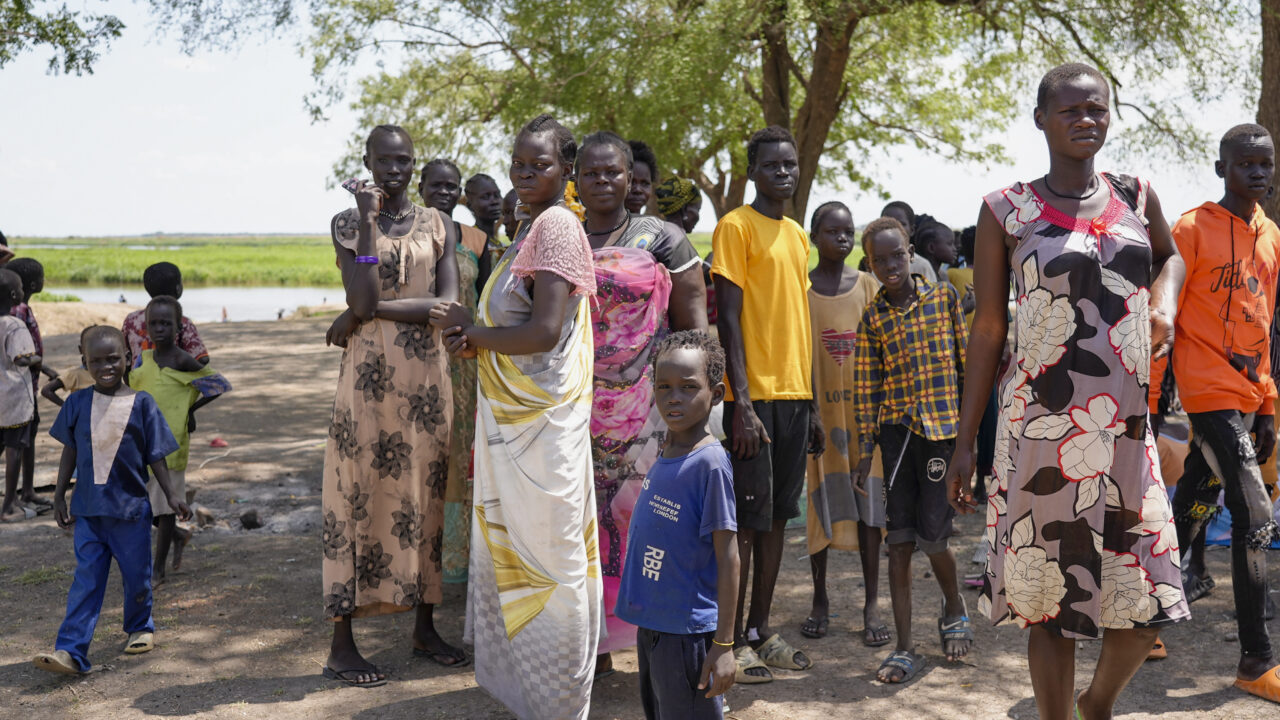 South-Sudanese who fled fighting in Sudan gather in Malakal town, which is hosting thousands who returned, in Upper Nile state, South Sudan Sunday, May 8, 2023. (AP Photo/Sam Mednick)
South-Sudanese who fled fighting in Sudan gather in Malakal town, which is hosting thousands who returned, in Upper Nile state, South Sudan Sunday, May 8, 2023. (AP Photo/Sam Mednick)
Starvation is killing scores every day in war-torn Sudan, where hunger blights 25 million people, well over half of the country’s population. About 40% of those facing hunger are acutely food insecure, including 3.8 million malnourished children.
Over a dozen children are dying of hunger daily in the Zamzam camp which hosts over 300,000 Internally Displaced Persons (IDPs) near North Darfur state’s capital city, Al-Fashir, Adam Rojal, spokesperson of the General Coordination of Displaced and Refugees, told Peoples Dispatch.
Doctors without Borders (MSF) estimates that a quarter of the children in this camp are acutely malnourished, almost a third of whom will die “within weeks,” in the absence of urgent medical intervention.
Weakened by severe malnutrition, “children and pregnant women are also dying on a daily basis without any healthcare in the Kalma IDP camp” in South Darfur, on the outskirts of its capital city Nyala, Rojal said.
Doctors without Borders (MSF) estimates that a quarter of the children in this camp are acutely malnourished, almost a third of whom will die “within weeks,” in the absence of urgent medical intervention.
“200,000 children are projected to suffer from life-threatening hunger this year” in the five states of Darfur, Peter Graaff, acting WHO representative to Sudan, warned earlier this month. Most of them are in the region’s IDP camps that largely host those displaced during the civil war that erupted in Darfur in 2003.
These IDPs had since been surviving on food aid from the UN World Food Program (WFP) program. “These food rations stopped” after the ongoing war broke out in April 2023 between the Sudanese Armed Forces (SAF) and the Rapid Support Forces (RSF), Rojal said.
The RSF was formed in 2013 by coalescing the militias the SAF had spawned and used to commit atrocities during the Darfur civil war, including massacres, mass rapes, and torching of villages, which left people displaced in millions.
After the power struggle simmering within the military junta between the SAF and the RSF boiled over into a war last April, “the international organizations have not been able to send rations for 10 consecutive months due to the lack of safe passages,” Rojal explained. “Their warehouses have been looted”, mostly by the RSF and the militias it backs.
The “marginal work and limited agriculture” the IDPs used to undertake to earn some income and supplement their nutrition has also been rendered impossible after the start of this war, because “it is not safe to leave the camp,” he said. The IDPs are “targeted by both sides of the absurd conflict.”
Desperate to find food, Abdul Suleiman risked setting out from the Al Hamidiyya IDP camp on the outskirts of Central Darfur state’s capital city Zalingei to check if he could find anything at the compound of the Humanitarian Aid Commission (HAC) on February 15. Detained by the RSF en route, he remains missing to date, Rojal said.
In the town of Kass in South Darfur, 15-year-old Arafat Kosolo, who had ventured out of the Sanqada IDP camp, died of torture earlier this month, two days after he was arrested by the RSF. These are only but a “few of the many examples” of the dangers the IDPs face when they dare leave their camps to search for food, Rojal said.
“All IDP camps in Darfur” are infested with “malaria, fevers and diarrhea”, he added. “Hunger weakens the body’s defenses and opens the door to disease and increases morbidity and mortality,” warned WHO’s Sudan Representative Graff.
Cholera may also be inching toward the semi-desert region in western Sudan. With at least 292 associated deaths, there are more than 10,700 suspected cases of cholera in at least 11 of Sudan’s 18 states.
The deadly disease is spreading along the northern region, after starting last September in the humid agricultural heartland of eastern Sudan, which was overwhelmed by the millions of new IDPs displaced by the current war, mostly from the neighboring capital region of Khartoum.
With at least 292 associated deaths, there are more than 10,700 suspected cases of cholera in at least 11 of Sudan’s 18 states.
In mid-December, the conflict expanded into one of the fertile eastern states, Gezira, known as Sudan’s breadbasket for growing half of all the wheat produced in the country. After RSF consolidated power in this state, fighting also spread to parts of the neighboring states including Sennar, White Nile and South Kordofan.
This has “interrupted the main season harvesting and cultivation of winter wheat in highly productive regions of Sudan,” said Emily Turano, Senior Food Security Analyst at Famine Early Warning Systems Network (FEWS NET). While “FEWS NET was already projecting a below-average national harvest”, the expansion of the conflict in these regions has plummeted the availability of food grains “even further”, she added.
With record levels of hunger and on the heels of a lost harvest season, Sudanese are bracing for worse as the country enters lean season starting from April until July when food availability is normally at its annual lowest.
At this time of starvation and diseases, most healthcare facilities in the conflict-affected areas have gone out of service, leaving two-thirds of the country’s population without access to medical care. “The situation in Sudan is therefore a perfect storm,” Graff observed.
Your support matters…Independent journalism is under threat and overshadowed by heavily funded mainstream media.
You can help level the playing field. Become a member.
Your tax-deductible contribution keeps us digging beneath the headlines to give you thought-provoking, investigative reporting and analysis that unearths what's really happening- without compromise.
Give today to support our courageous, independent journalists.
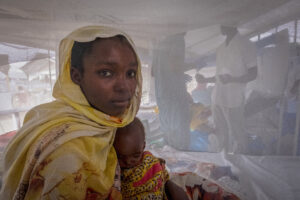
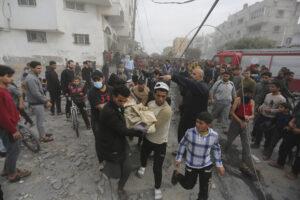
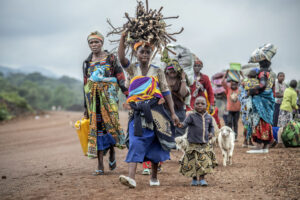
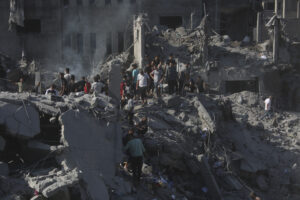
You need to be a supporter to comment.
There are currently no responses to this article.
Be the first to respond.